Lost Newspapers
||||
The Record
The Record was a local paper printed at 175 Shepherd Ave. In the sixties, my brother
and I used to buy copies direct from the printer for 2 cents and sell them for 5 cents each. It was published by Edward M. Herrschaft starting in 1912. Herrschaft built a mini-empire of local weeklies including the City Line Post (1938). He
finally retired around 1974, when most of those locals ended. Thanks to his niece Doris Merrick for the info. Paula Curci sent me some scans from a 1961 edition which featured her father Michael Curci and my brother found a 1938 edition. The Brooklyn Public Library has a small number of issues on microfilm from 1965. |
 |
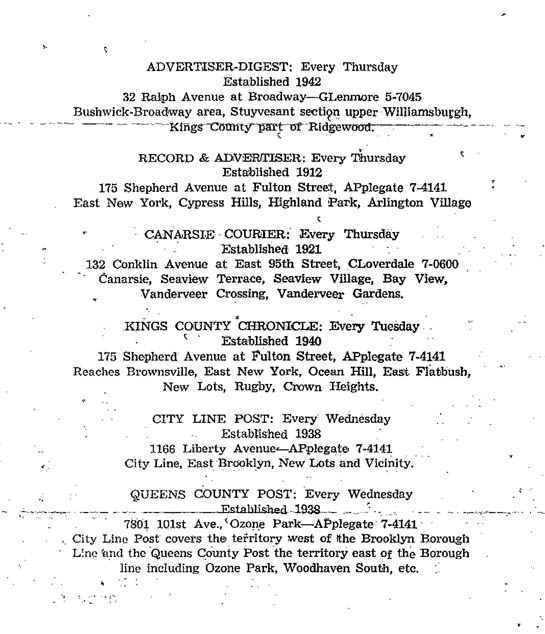
|
Doris Merrick sent this stationery which shows her uncle's mini-empire. On selling the record; "You mentioned buying the Record for 2 cents and selling it for 5. I had to laugh, because we would do the same thing and one lady came and complained to Uncle Ed because my brother Chris and I had sold her yesterday's paper...what did we know??"
. |
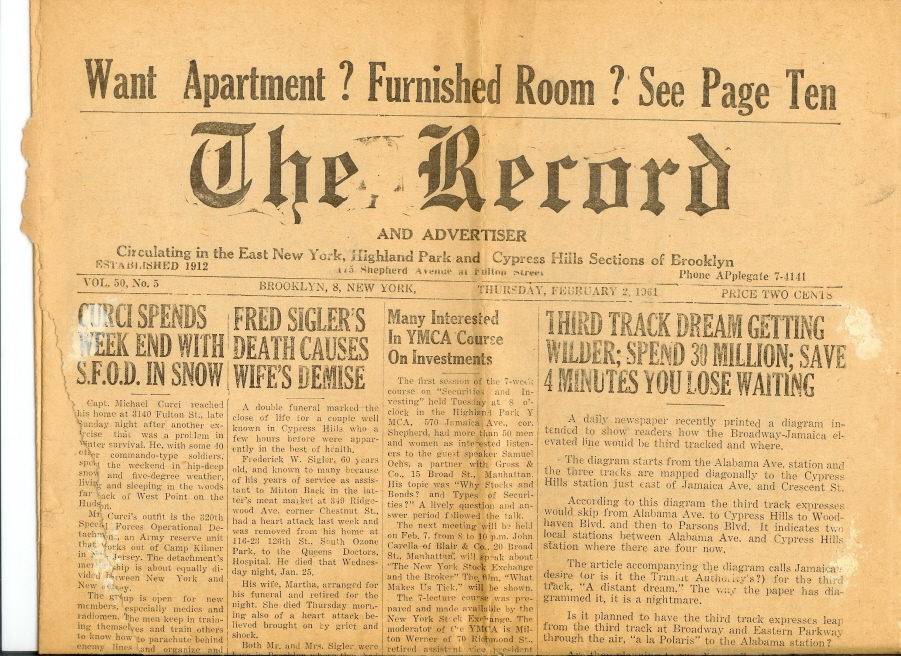
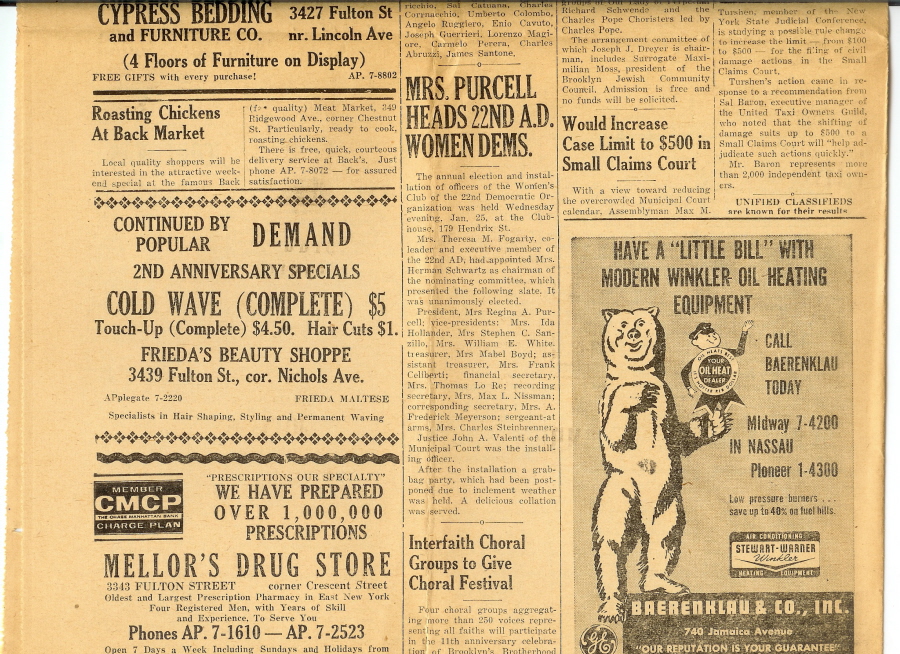
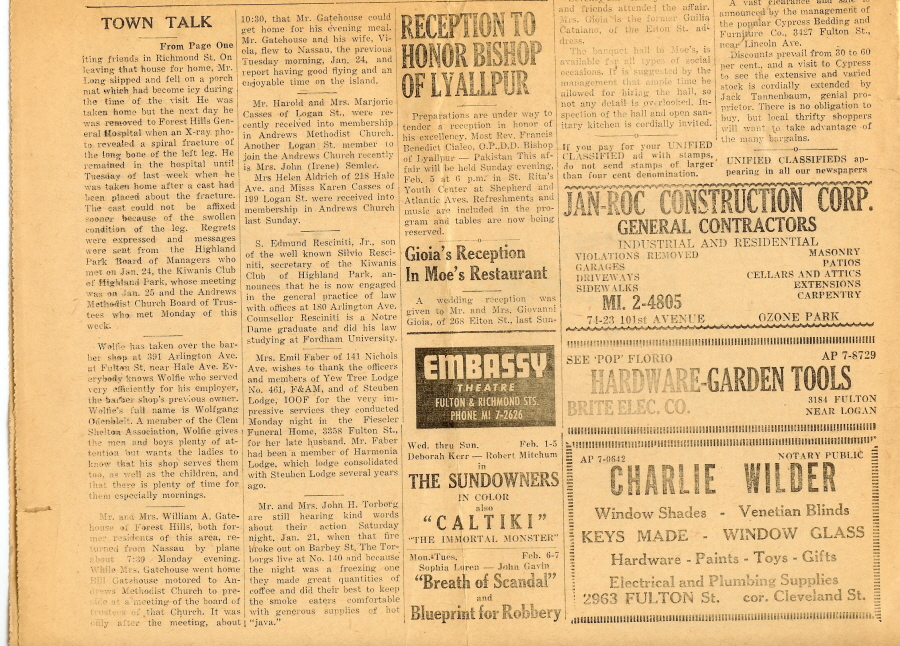
|
Paula Curci sent in these scans of an issue from February 2, 1961. Note the great ads. Mike Savchak recalls visiting the office during a P.S. 108 class trip in 1959; "We were graciously hosted, shown the linotype machine, allowed to print a line of text and then were given the freshly minted line of type so we could take it home as a memory of the trip. "
|
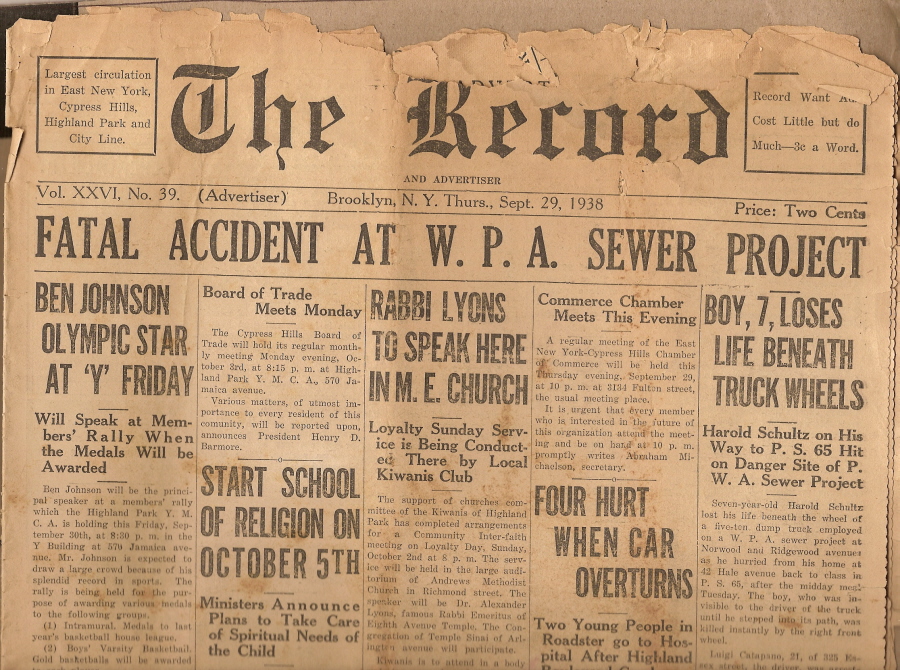

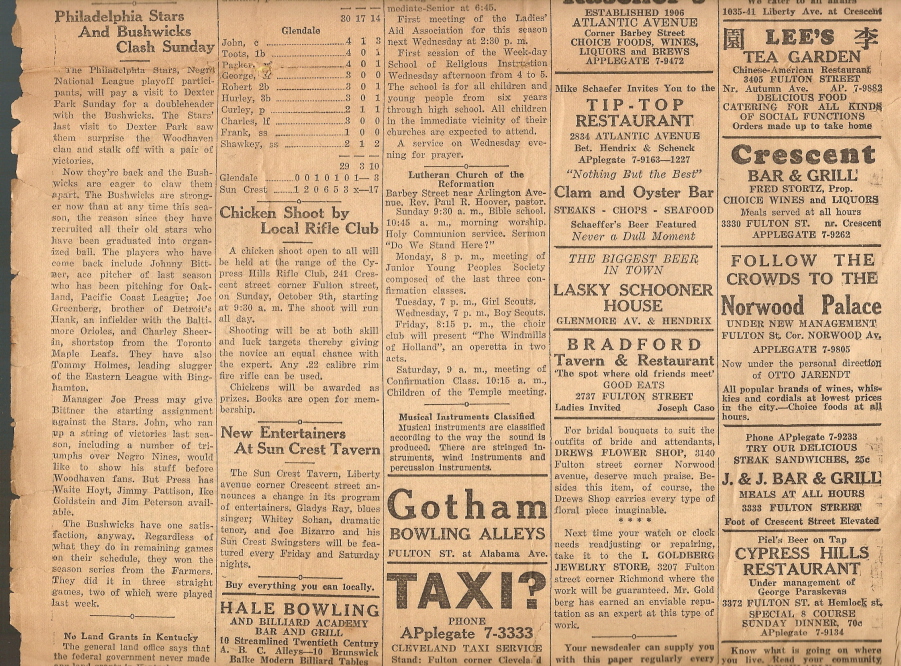
|
My brother Bruce tracked down this Sept. 29 1938 issue. He also added his recollections selling the paper:
"On Thursdays we would leave school and run to the printer where
we would buy the papers hot off the press, literally. At times we would
get there and they would still be typesetting, using the hot metal type
no longer in use. Using our accumulated life savings we would
buy a dozen or so newspapers at 2 cents each and run out to sell them at 5 cents each.
This not only netted us a tidy profit but when we were lucky people would "tip"
us by giving us dimes or even quarters and tell us to keep the change.
My first stop would be to run straight back to the school yard (P.S. 108) where
I could find Mrs. Abendola. She was a substitute teacher, a small bent over lady,
the great-grandmotherly type of around 117 years old. She would S-L-O-W-L-Y open
her immense pocketbook, look for her change purse, slowly open that, and then spend
ten seconds pushing the coins around before she removed the first penny and counted
out loud "one penny...". She would repeat this process four more times, gradually
turning over the five cents required to purchase the newspaper. Since the change
purse appeared to contain nothing but pennies I couldn't imagine what she was doing.
Years later I now wonder if she was trying to give me the shiny ones.
Other stops on my route was the church parsonage on Arlington Avenue between
Ashford Street and Cleveland Street, where our pastor, Pastor Messina of
The Evangelical Lutheran Church of the Reformation (on Barbey Street) lived.
He was great with kids, and would pretend to only want to pay a penny or two
for the paper every week before handing over a dime. The Fish store on
Ashford Street and Fulton Street would always buy a paper and hand over a
quarter in the process. I would run around trying to sell all my papers until
eventually I learned the trick of waiting at the bottom of the steps of
the "QJ" (for Queens-Jamaica) (now the "J") train, the Cleveland Street stop,
where commuters would buy a batch after every train pulled in.
The accumulated profit would then be used primarily to buy baseball cards.
Typically I wouldn't be wise enough to remember to save some money to buy
papers the following week, instead scrounging around again to get the money.
Don't think I ever learned that lesson."
|

|
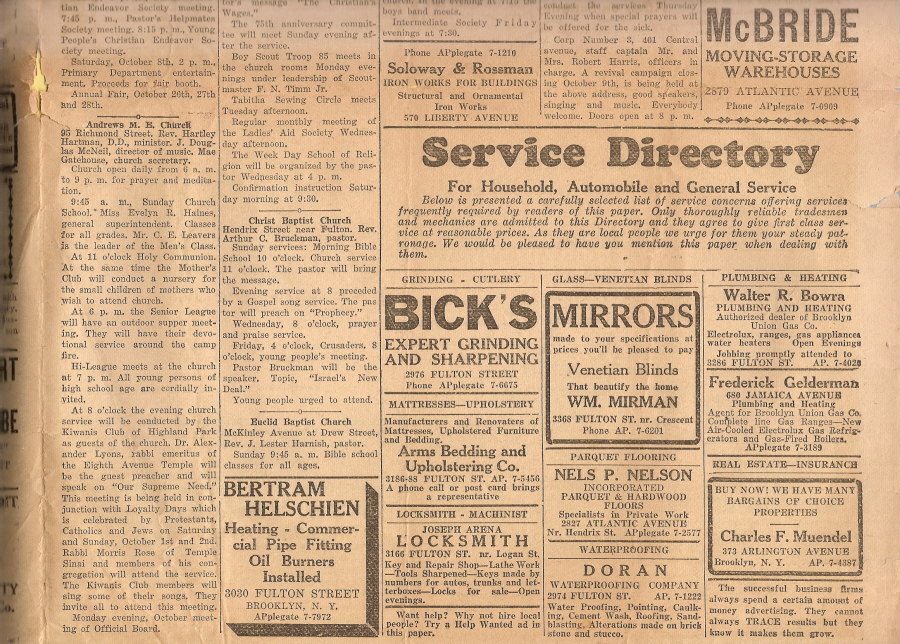
|
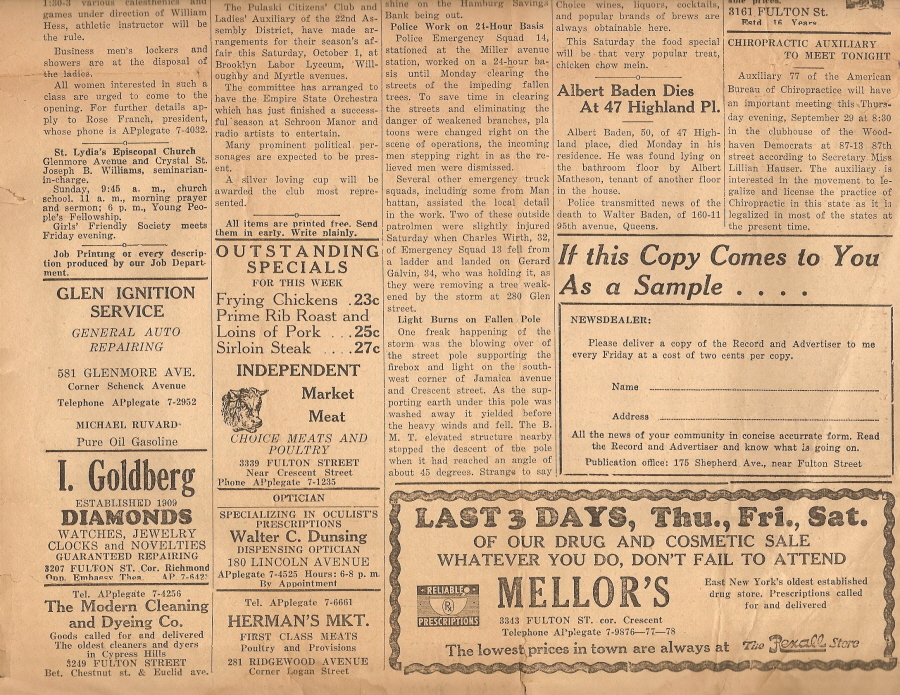
|
More great ads from the 1938 issue, including Mellors! |

|
Some ads from a 1965 edition. A few issues from 1965 exist on microfilm at the Brooklyn Public Library. Doris also shared another interesting fact abut her uncle; "Also, you have Andrew's Methodist Church on your site...that was his church. In fact, Uncle Ed was a circuit preacher in the Methodist Church for 60 years and when the pastor at Andrew's had a "nervous breakdown", Uncle Ed preached for him every Sunday for three solid years so he (the pastor...I don't know his name) could stay on the payroll and get his pension." |
The East New Yorker
I don't have much background yet on this local paper. The issue I have is from 1980, I'm trying to find out when they began publishing and when it ended.
|
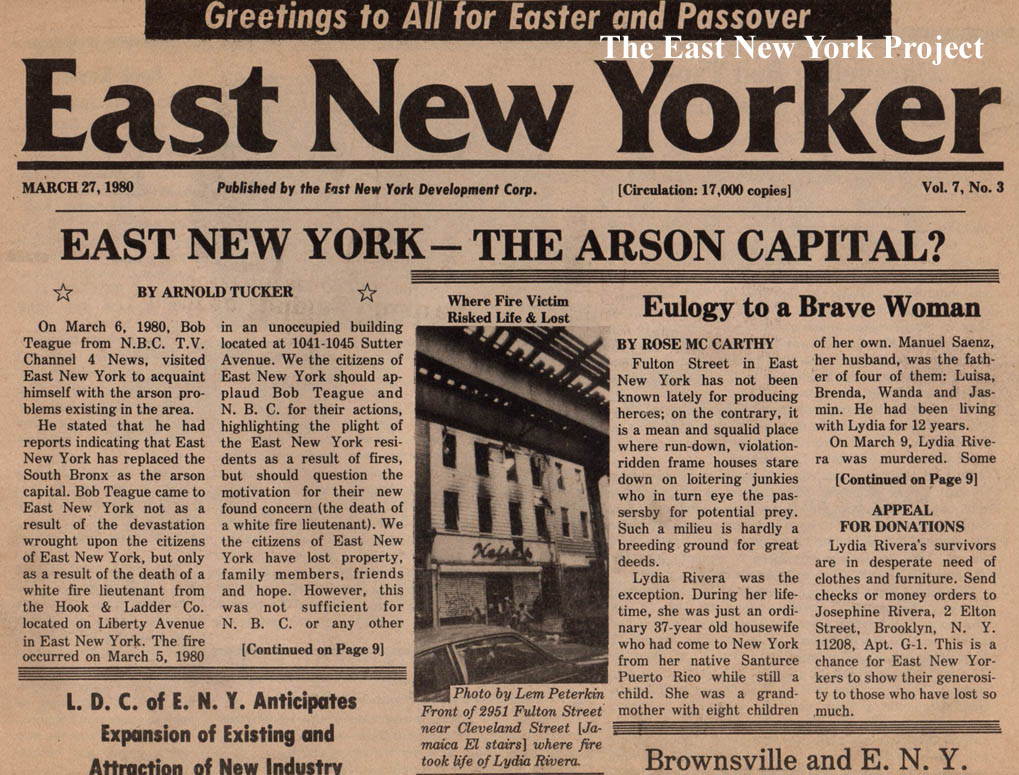
|
From the front page; documenting a neighborhood in downturn. Heise's was right around from the corner from where I lived, pretty much at the foot of the Cleveland Street train station on Fulton Street. In our book we feature an image of an
E. F. Meyer Confectionary from 1915, I believe it was the same location. This was the first place I can recall 'dining out'. |
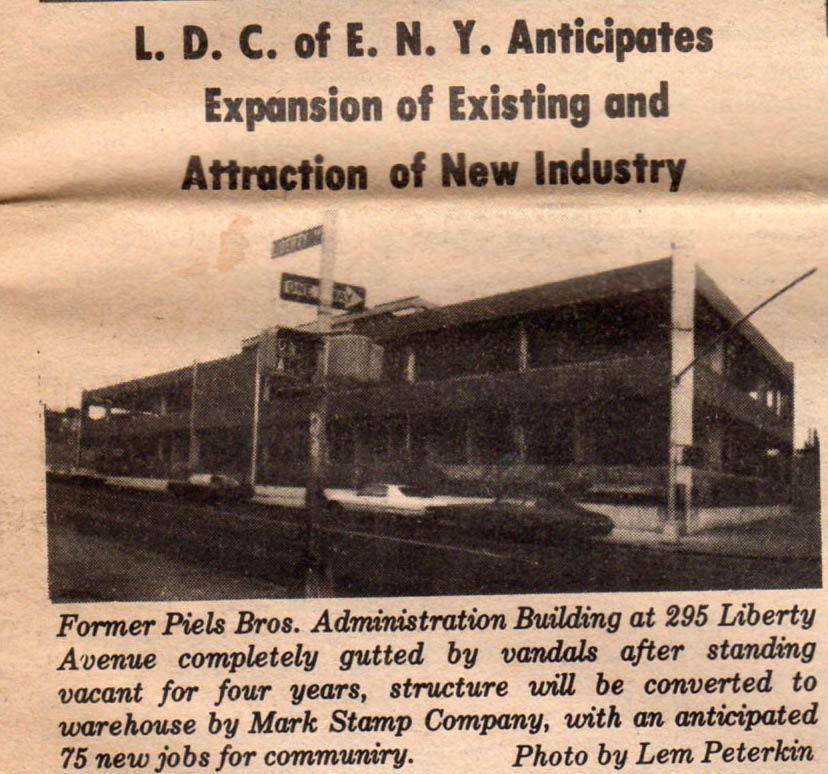
|
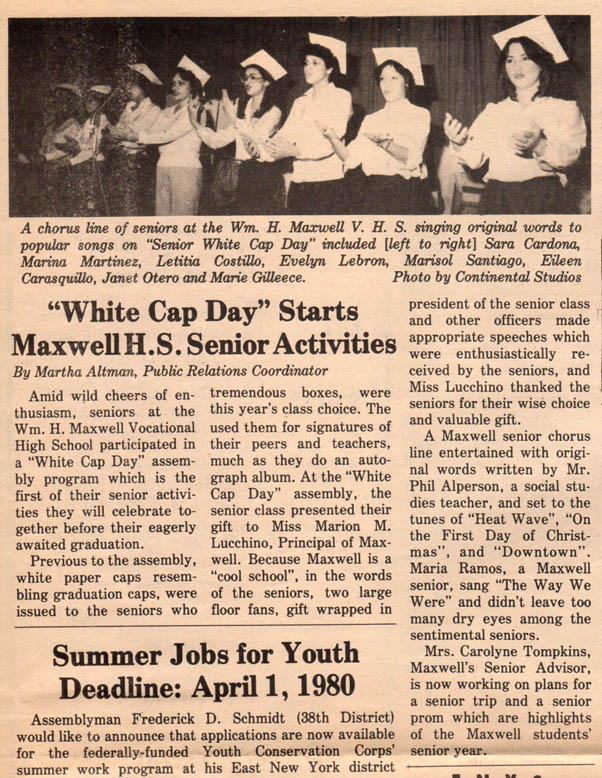
|
A shot of the Piels admin building after Piels had closed. On the right, some coverage of "White Cap Day" at
Maxwell Vocational. |
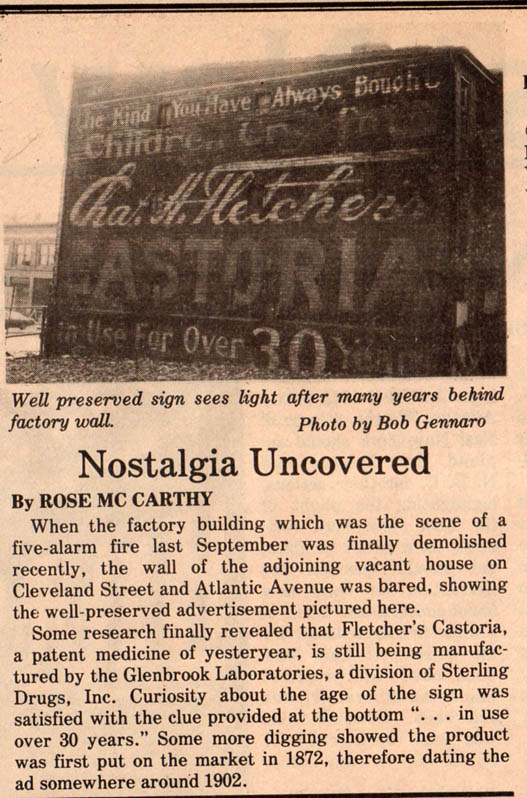
|

|
The author of this piece, Rose McCarthy, was sort of the unofficial historian of the area back in the 70s. The article covered the discovery of an advertising sign after a building came down on Cleveland Street. On the right, I provided a closeup of a view taken from the LIRR's elevated
Warwick Street station on Atlantic Avenue in 1920. You can see the sign on the right. |
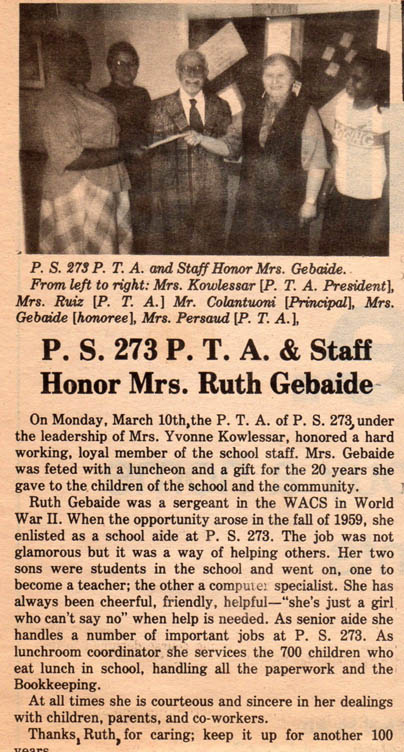
|
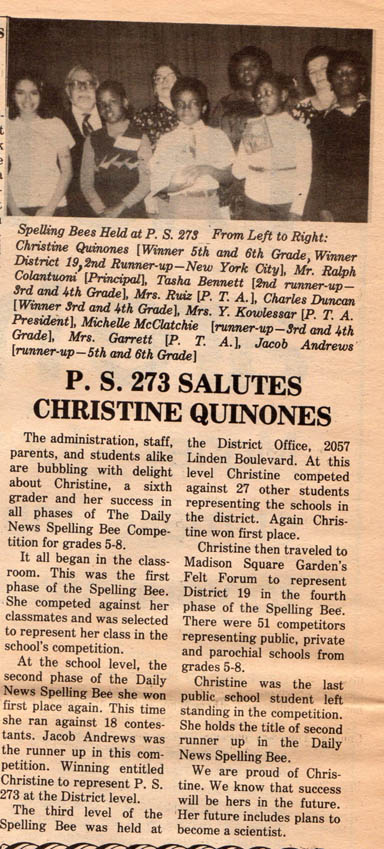
|
P.S. 273 was constructed in 1952, and is located at 923 Jerome Street down by Wortman. Mr. Colantuoni,
who was the principal, lived around the corner from us and I saw him fairly recently. He also was Assistant Principal at I.S. 171. His son Peter and I were friends and Pete
has often contributed material to the website. |

|
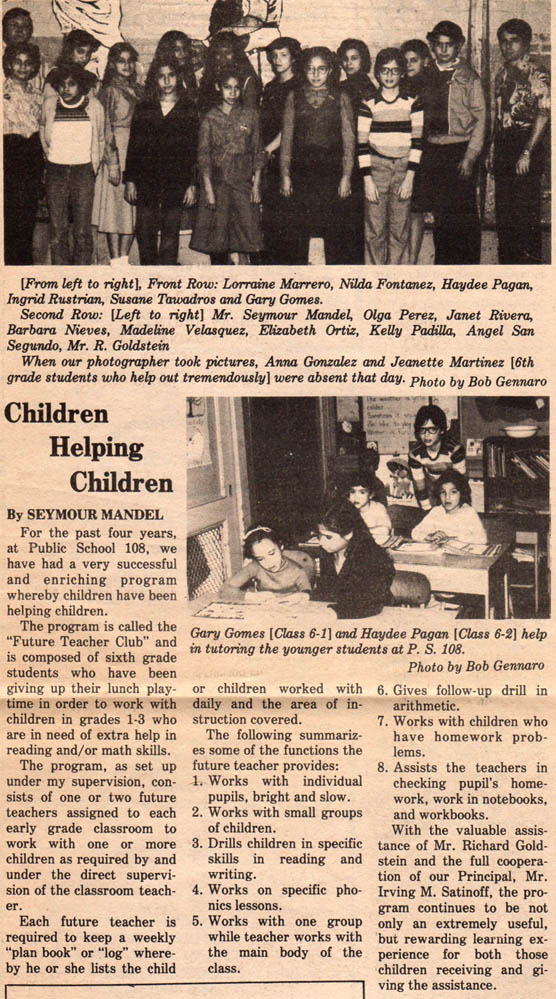
|
St. Sylvester's School just closed recently, this article commemorated an anniversary. The reason I have this issue is because my mother saved it for the article on the right; my brother Gary was featured in an article about student tutoring at P.S. 108. |
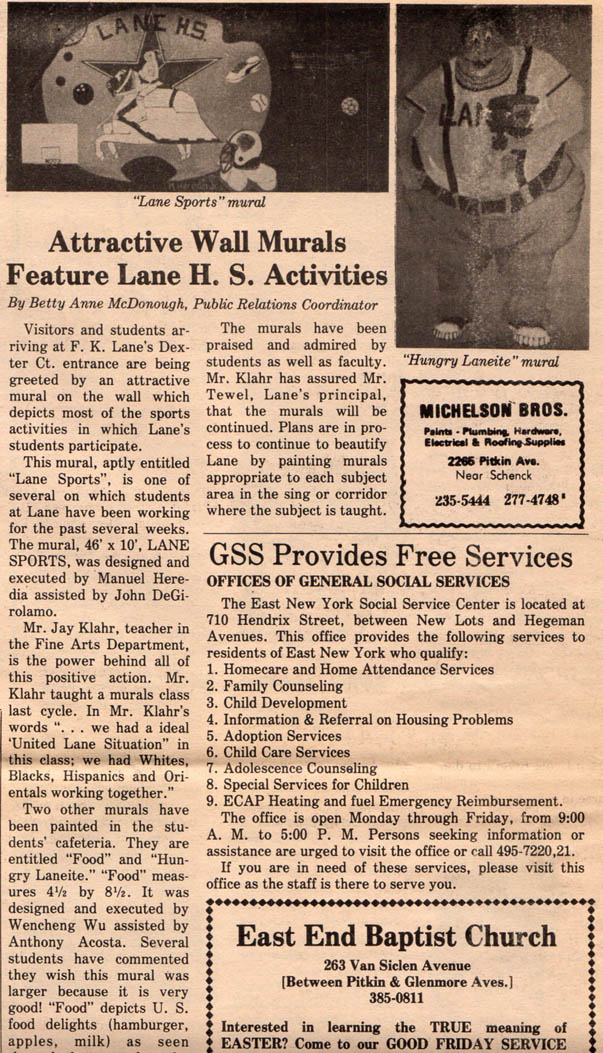
|
Ending with a piece on Franklin K. Lane High School. |
The Chat
The Chat was published in neighboring Bushwick from roughly 1900 to 1945. They produced several different editions, on focusing on ENY and Bushwick, one on Ridgewood, Queens, and another on Jamaica, Queens. The main office was on Wiefield Street just north of Broadway. |
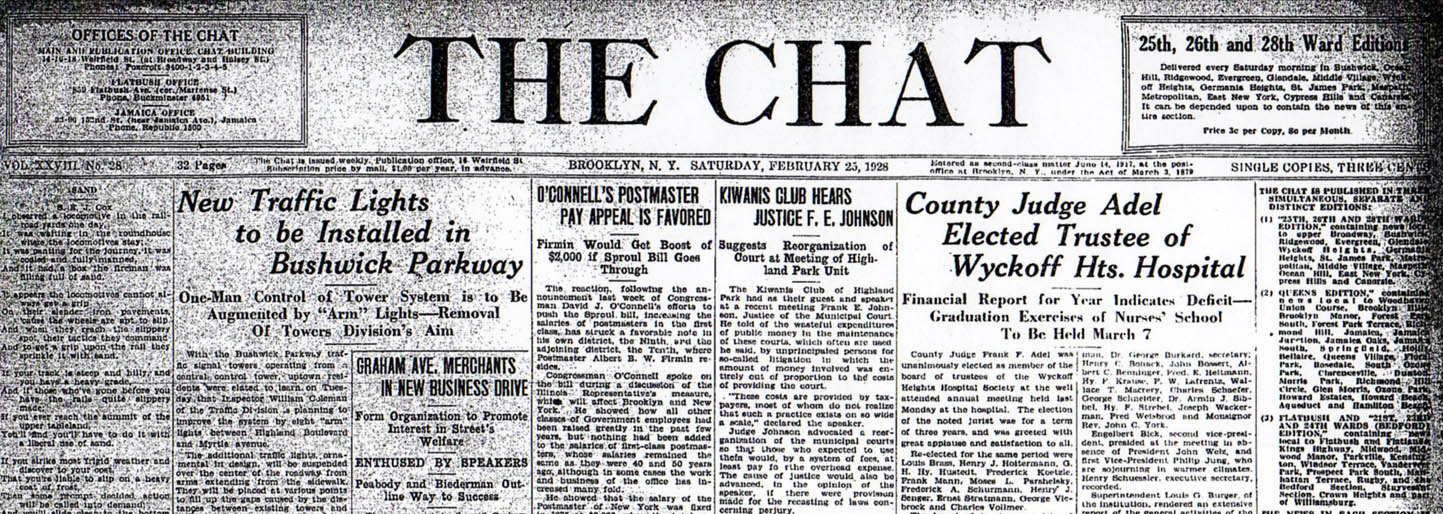
|
The New York Public Library has some issues from 1928 on microfilm. There is a fair amount of East New York coverage. What caught my eye on this page was the Dexter Park story; see below. |

|
I thought this was an amazing story; Max Rosner, who owned the Bushwicks, made a serious attempt to bring
the Brooklyn Dodgers, then known as the Robins, to Dexter Park. (For those not familiar, Dexter Park sat just east of Franklin K. Lane High School. For images, visit Zone 4.)
I have no idea how close he came to pulling this off, but as we know it never happened. |

|
The Rev. Don Marsh served East End Baptist into the 1960s, so this article caught my eye. |
City Line Post
Herrschaft also published the City Line Post out of 1166 Liberty Avenue, starting in 1938. This 1944 issue was found on EBay. I converted all but page 1 to black and white for ease of reading. |
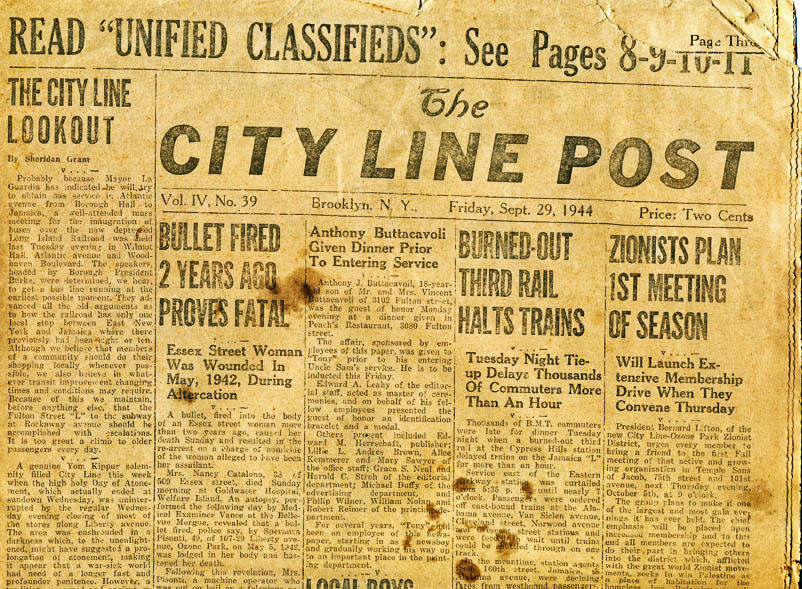
|
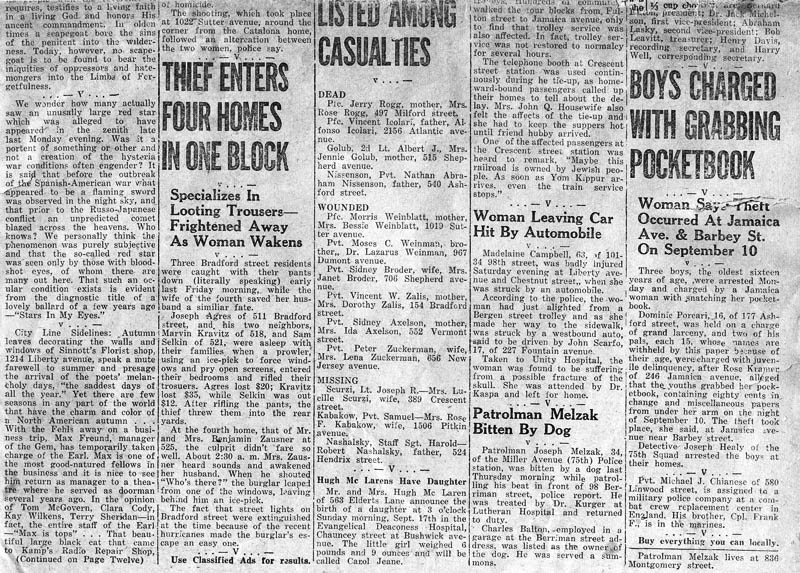
|
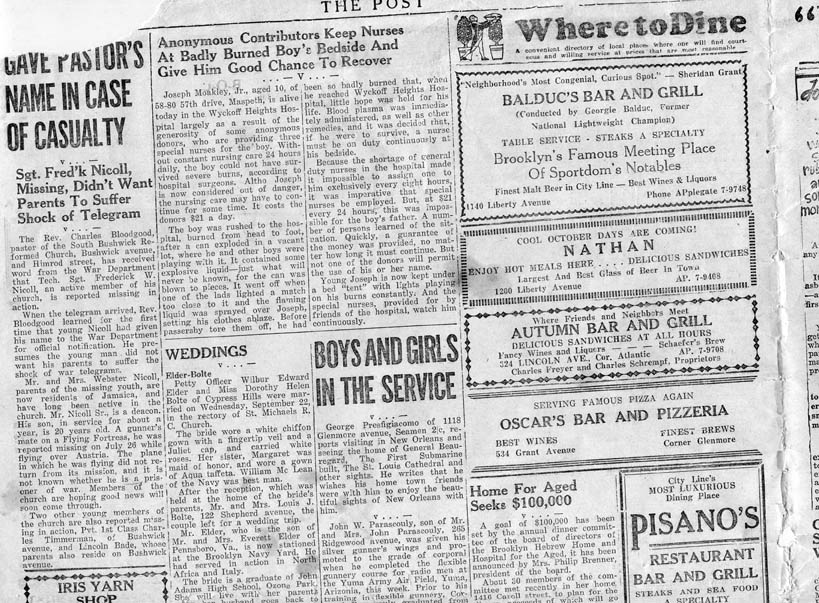
|
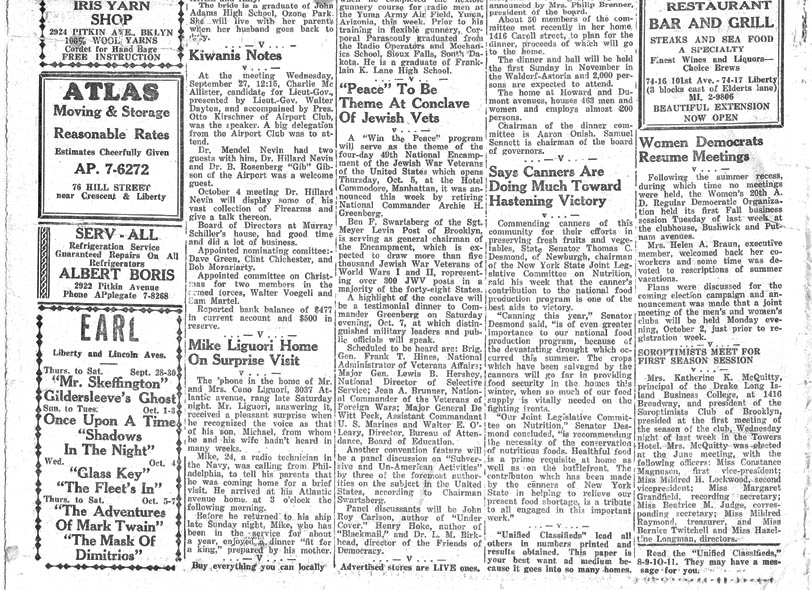
|
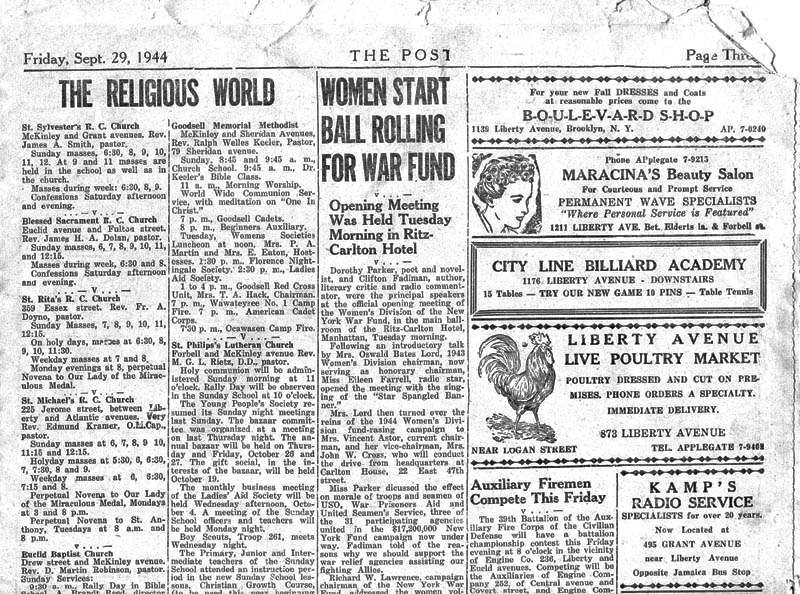
|
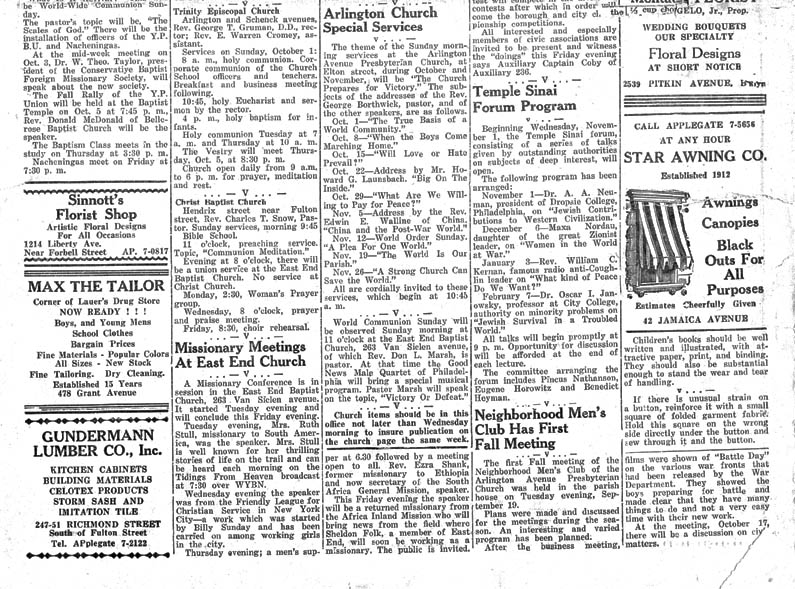
|
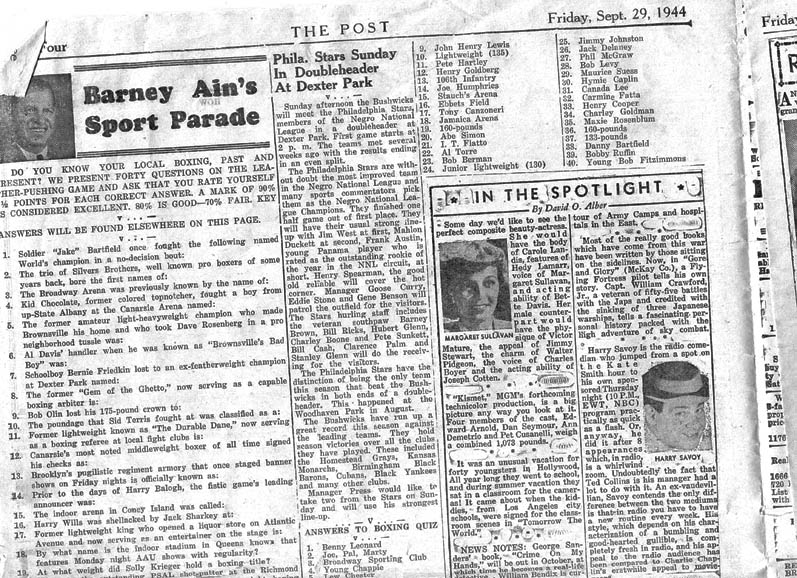
|
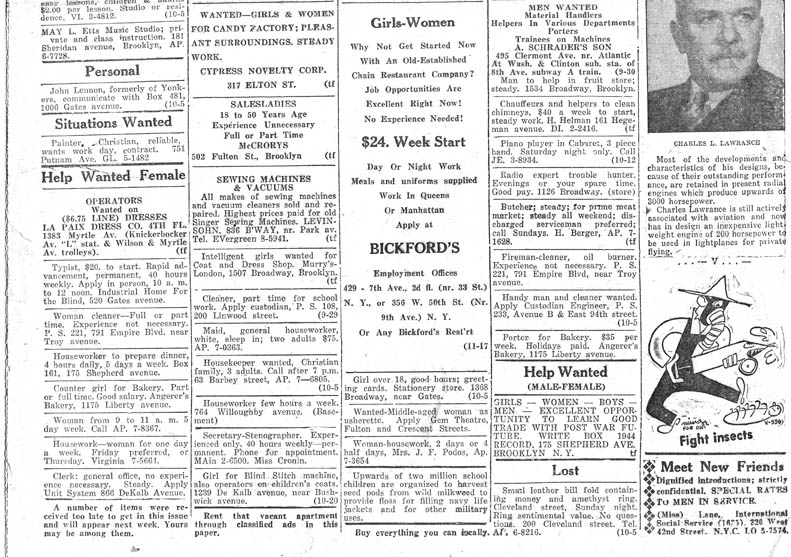
|
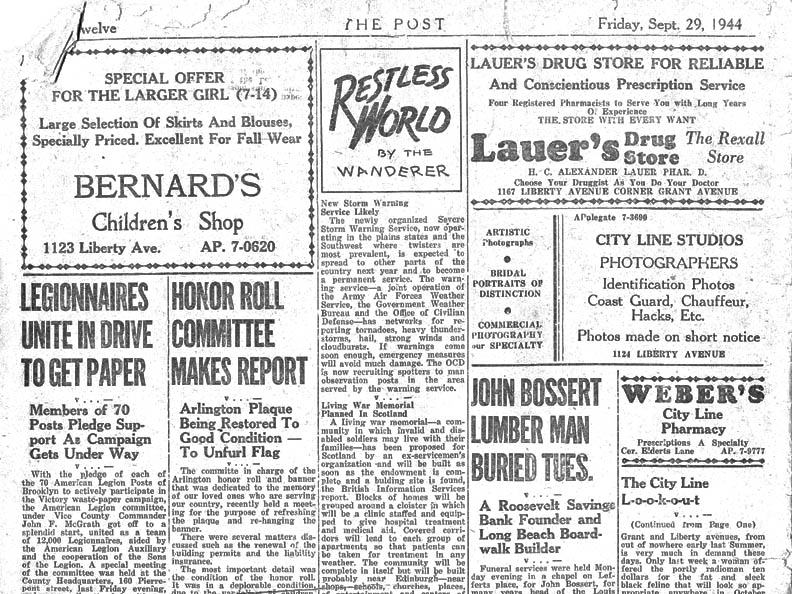
|
School Bank News
In June 1921 the East New York Savings Bank opened a School Savings Department, and shortly thereafter began publishing a monthly newspaper that was distributed to the schools. Originally entitled "The School Savings Bank Monitor" the name was eventually shortened to "The School Bank News". I do not know when it stopped publishing, though we know it was still being issued bimonthly in 1968. Thanks to Ted Maciag for the copy of this 1948 issue. |
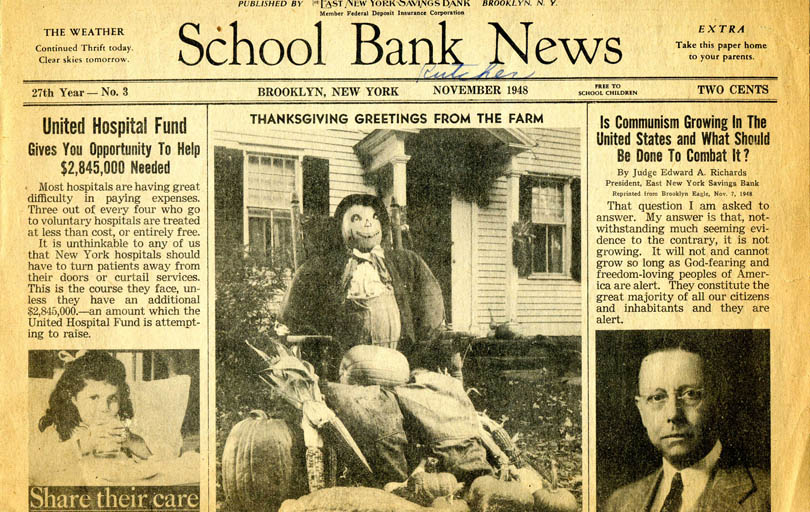
|
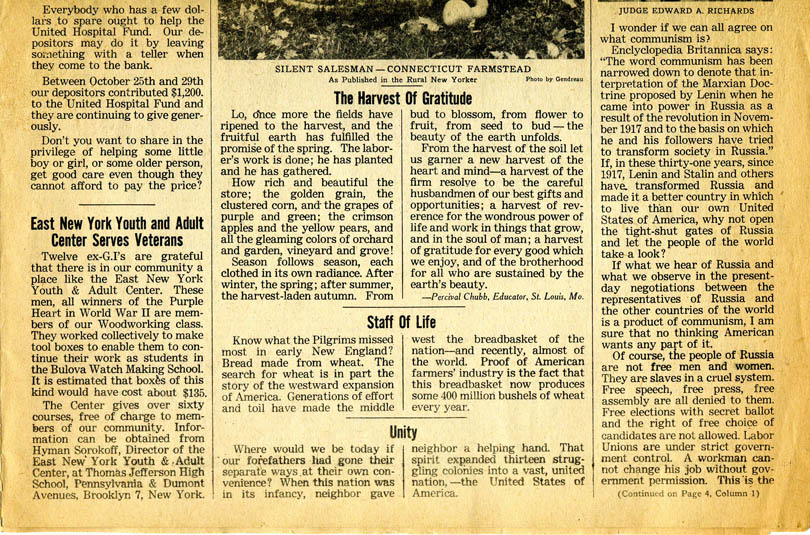
|
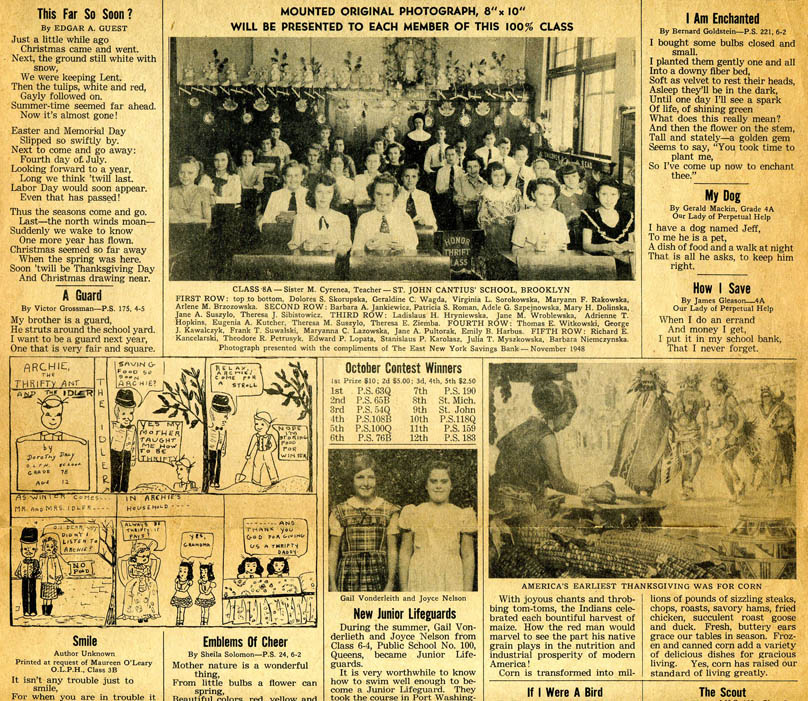
|

|
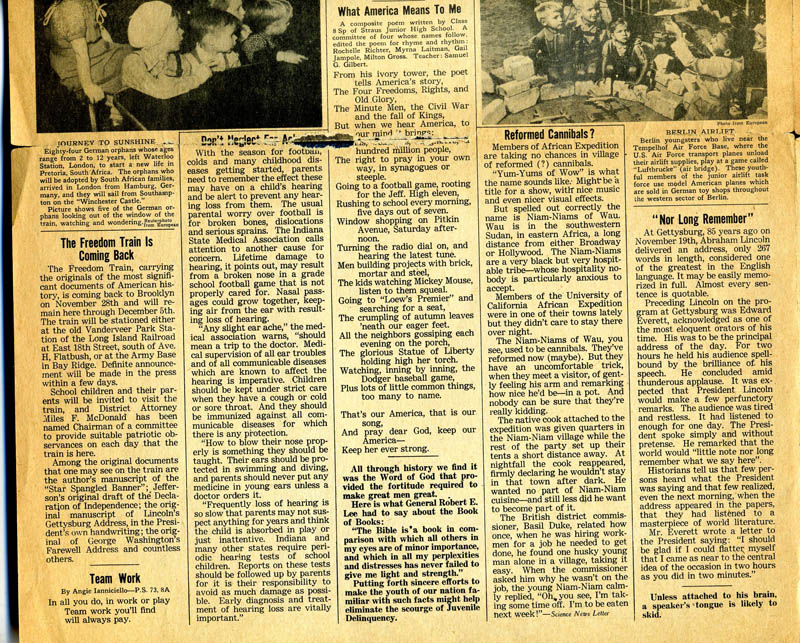
|
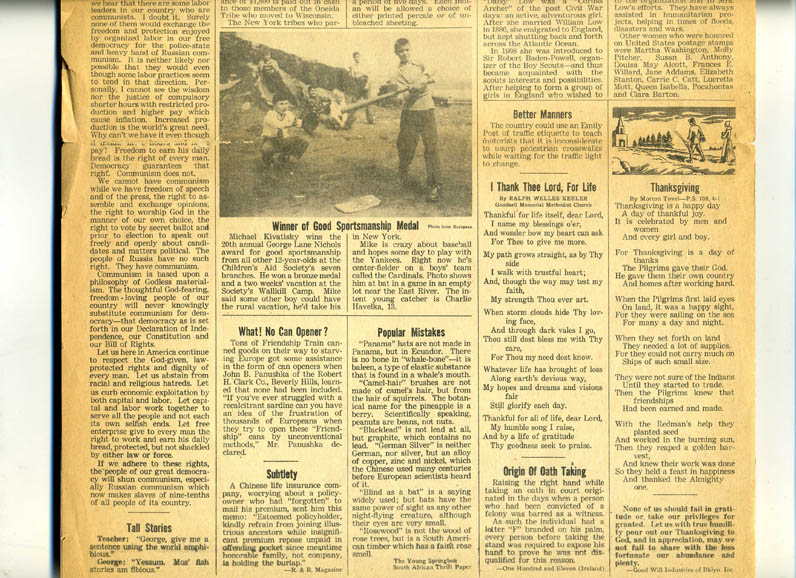
|
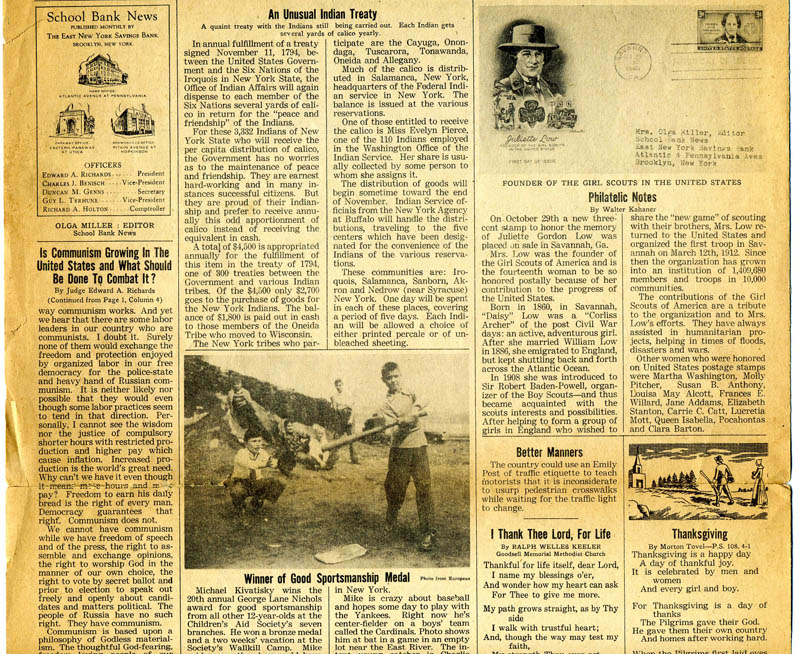
|
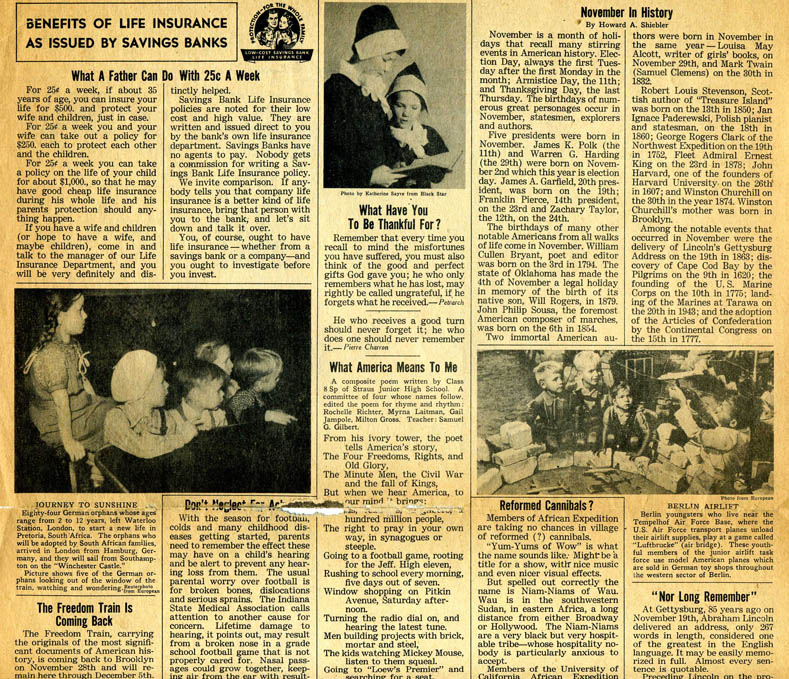
|
|
A 1964 edition with a Thrift Savings Class picture from St. John Cantius School. |
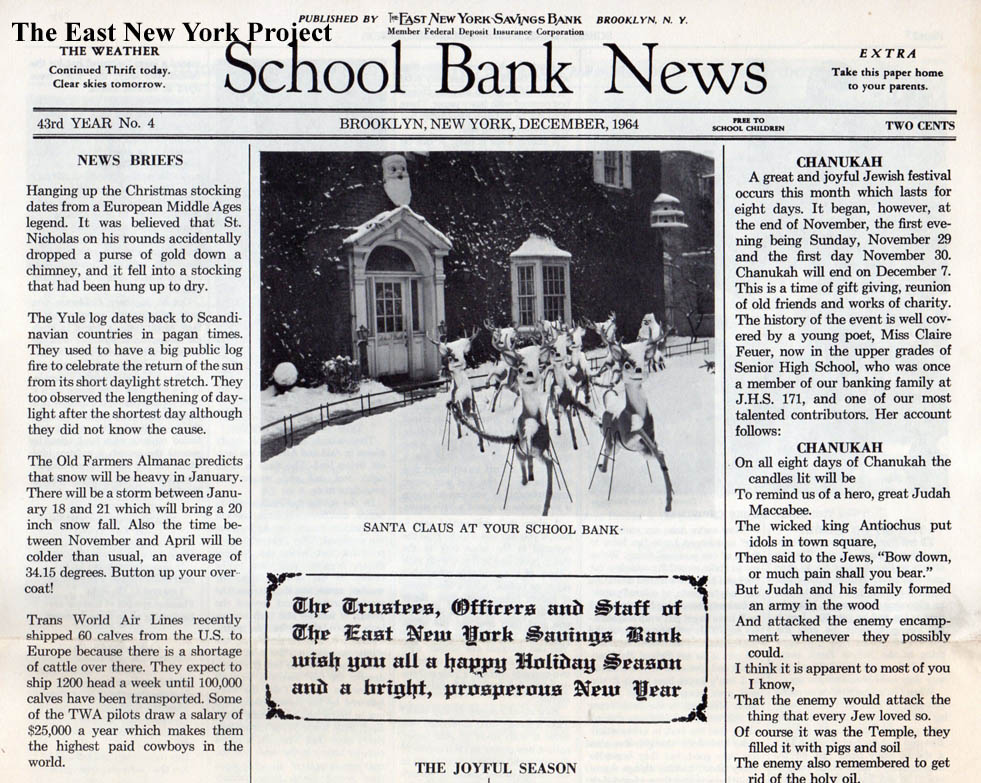
|
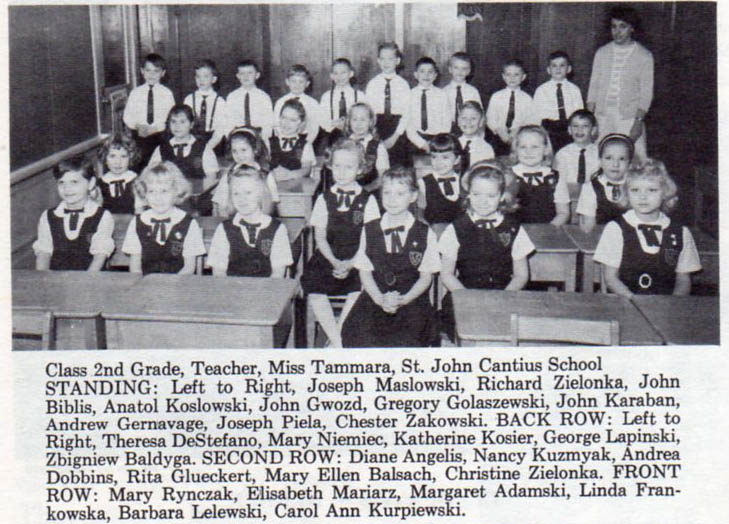
|

|







